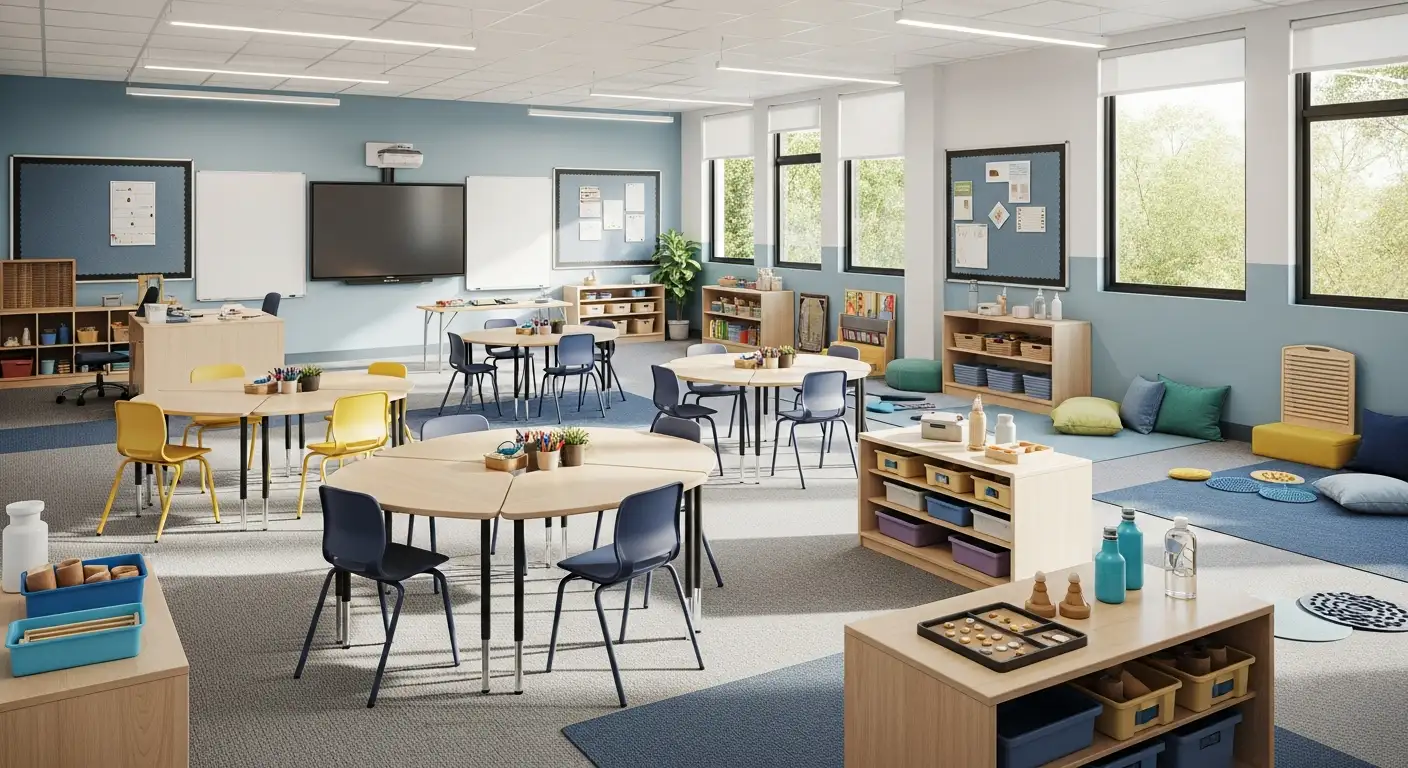Understanding the Foundations of Reciprocal Conversation in Autism
Conversational reciprocity is a core component of social communication that involves the back-and-forth exchange of ideas, questions, and responses. For children with autism, developing these skills is vital to foster meaningful interactions and reduce social isolation. This article explores how ABA techniques can effectively support the acquisition and generalization of reciprocal conversation skills, emphasizing practical strategies, activities, and research-backed practices.
Defining Conversational Reciprocity and Its Significance in Autism
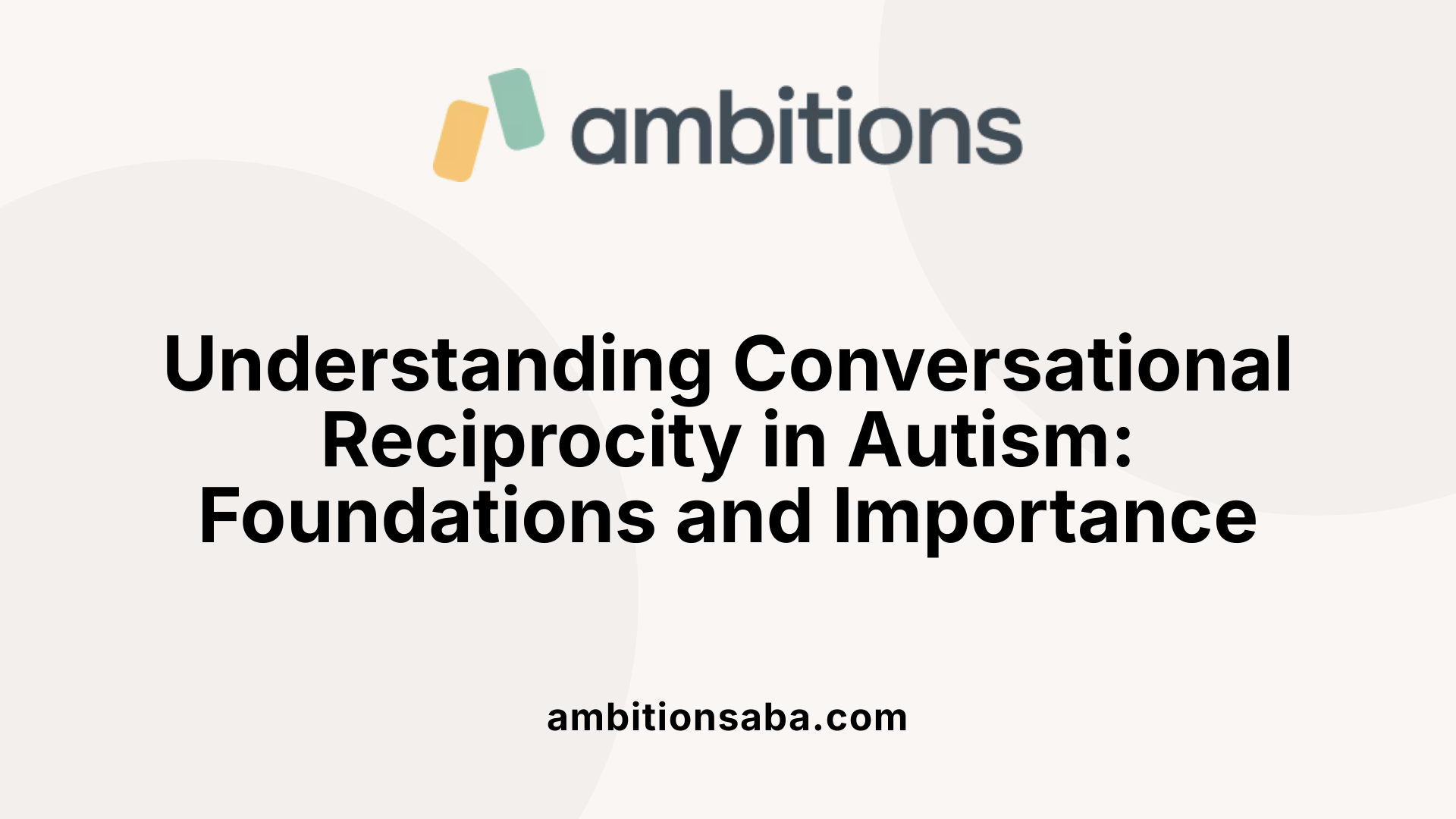
What is conversational reciprocity and why is it important for children with autism?
Conversational reciprocity refers to the natural, back-and-forth exchange in social communication, where individuals share ideas, ask questions, and respond appropriately to each other. It involves skills such as initiating topics, maintaining eye contact, understanding social cues, and interpreting nonverbal signals like gestures and body language.
For children with autism, mastering reciprocal conversation can be particularly challenging. They may have difficulty understanding or responding to social cues, which can hinder their ability to engage meaningfully with others. This often results in one-sided conversations, ignoring others’ reactions, or behaving as if they are giving a lecture rather than participating in dialogue.
Teaching strategies like structured turn-taking, visual supports such as picture cards and communication boards, social stories, and role-playing are used to help develop these skills. Applied Behavior Analysis (ABA) plays a significant role, employing reinforcement techniques like praise, tokens, and preferred items to encourage engagement in reciprocal exchanges.
By improving conversational reciprocity, children with autism can significantly enhance their social interactions. This skill helps them build friendships, participate in group activities, and develop a sense of belonging. It also boosts their confidence as communication becomes more effective and less stressful.
Impact on social relationships and quality of life
Enhancing reciprocal conversation skills directly affects children's social relationships. When children can initiate and respond appropriately, sharing interests and understanding others' perspectives, they are more likely to form meaningful bonds.
Furthermore, these skills contribute to better emotional regulation and reduced frustration in social settings. Successful communication promotes inclusion in peer groups and reduces feelings of isolation.
Overall, developing conversational reciprocity supports a more fulfilling social life for children with autism. It opens up opportunities for participation in a variety of settings, from school to community activities, ultimately improving their overall quality of life.
| Aspect | Focus | How It Helps |
|---|---|---|
| Initiating conversations | Starting dialogue | Builds confidence and interest in social interactions |
| Responding appropriately | Paying attention and reacting | Fosters understanding and rapport |
| Asking questions | Showing curiosity | Encourages engagement and deeper conversations |
| Reading social cues | Nonverbal communication | Enhances awareness and appropriateness |
| Maintaining topics | Staying on subject | Creates meaningful exchanges |
Understanding and teaching reciprocal conversation is essential for supporting children with autism in achieving more connected, happy, and successful social lives.
How ABA Facilitates Social and Communication Skill Development
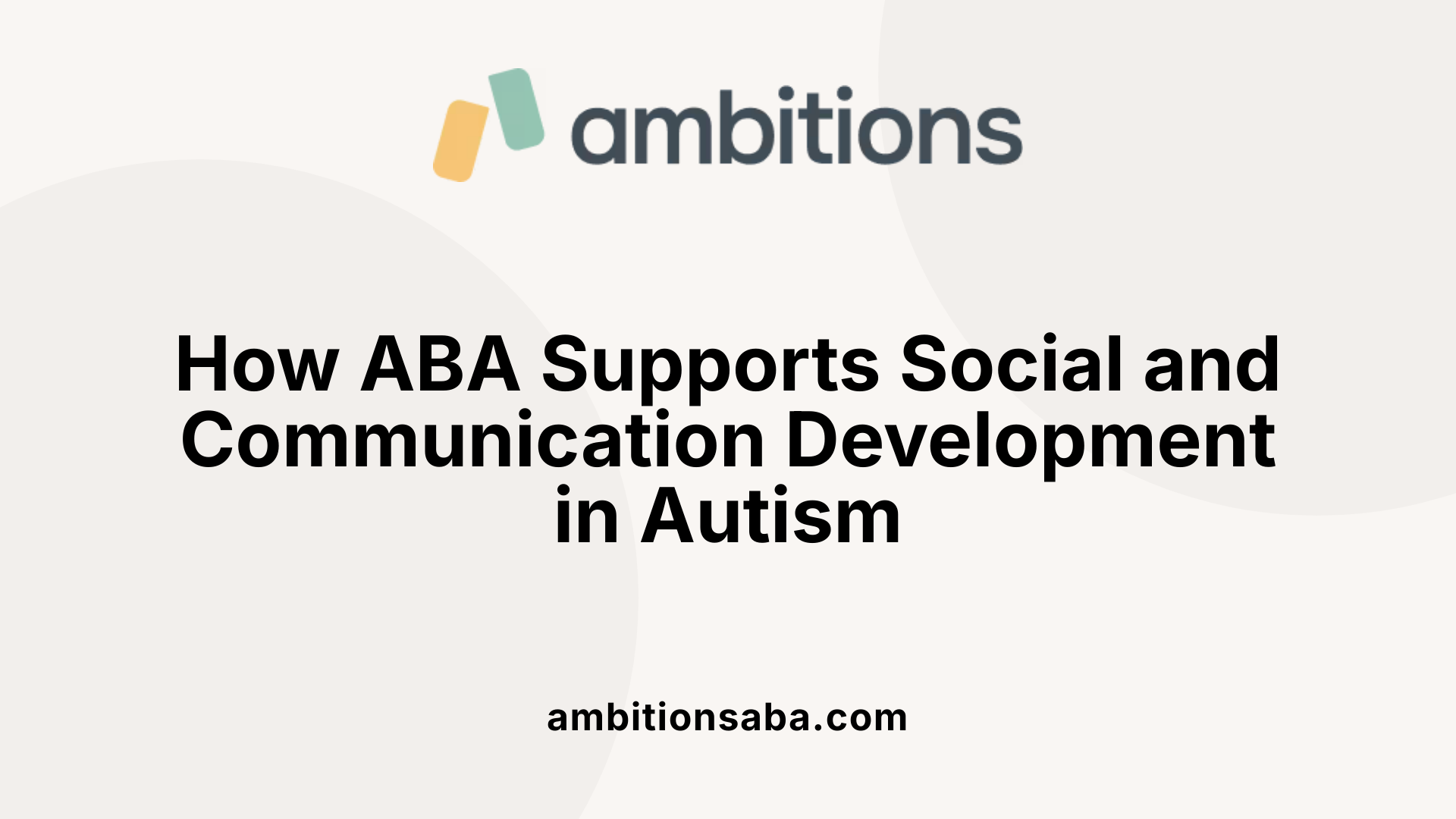
How can ABA support the development of social skills and communication in children with autism?
ABA, or Applied Behavior Analysis, is a proven approach that helps children with autism improve their social and communication abilities. It works by breaking down complex social behaviors into smaller, manageable steps and using a variety of strategies to teach and reinforce these skills.
One of the most common ABA techniques involves structured methods such as social stories and social scripts. These tools provide visual and narrative guidance that help children understand social cues and appropriate responses. For example, social stories may describe how to greet a peer or ask for help, making these actions more predictable and less intimidating.
Modeling is another critical method used in ABA. Therapists demonstrate appropriate social behaviors, like making eye contact or taking turns, which children can imitate. Role-playing and video modeling also give children safe environments to practice new skills, promoting confidence and mastery.
Reinforcement plays a vital role in ABA. Positive behaviors are encouraged through praise, tokens, or preferred items. When children successfully engage in reciprocal conversation—such as asking a question or responding appropriately—they are rewarded. This increases the likelihood that they will repeat these behaviors.
Natural environment teaching (NET) helps generalize skills from therapy settings to everyday situations. By practicing social interactions in real-world contexts, children learn to apply their skills across different environments, whether in school, at home, or in the community.
Parents and caregivers are also integral to ABA intervention. Training programs teach them how to reinforce social skills at home, ensuring consistency and more opportunities for practice. This ongoing support significantly enhances the child's progress.
Overall, ABA's tailored and evidence-based techniques foster meaningful improvements in children's ability to connect, communicate, and participate in social activities, paving the way for greater social inclusion and a better quality of life.
Targeted Strategies within ABA to Develop Reciprocal Conversation Skills
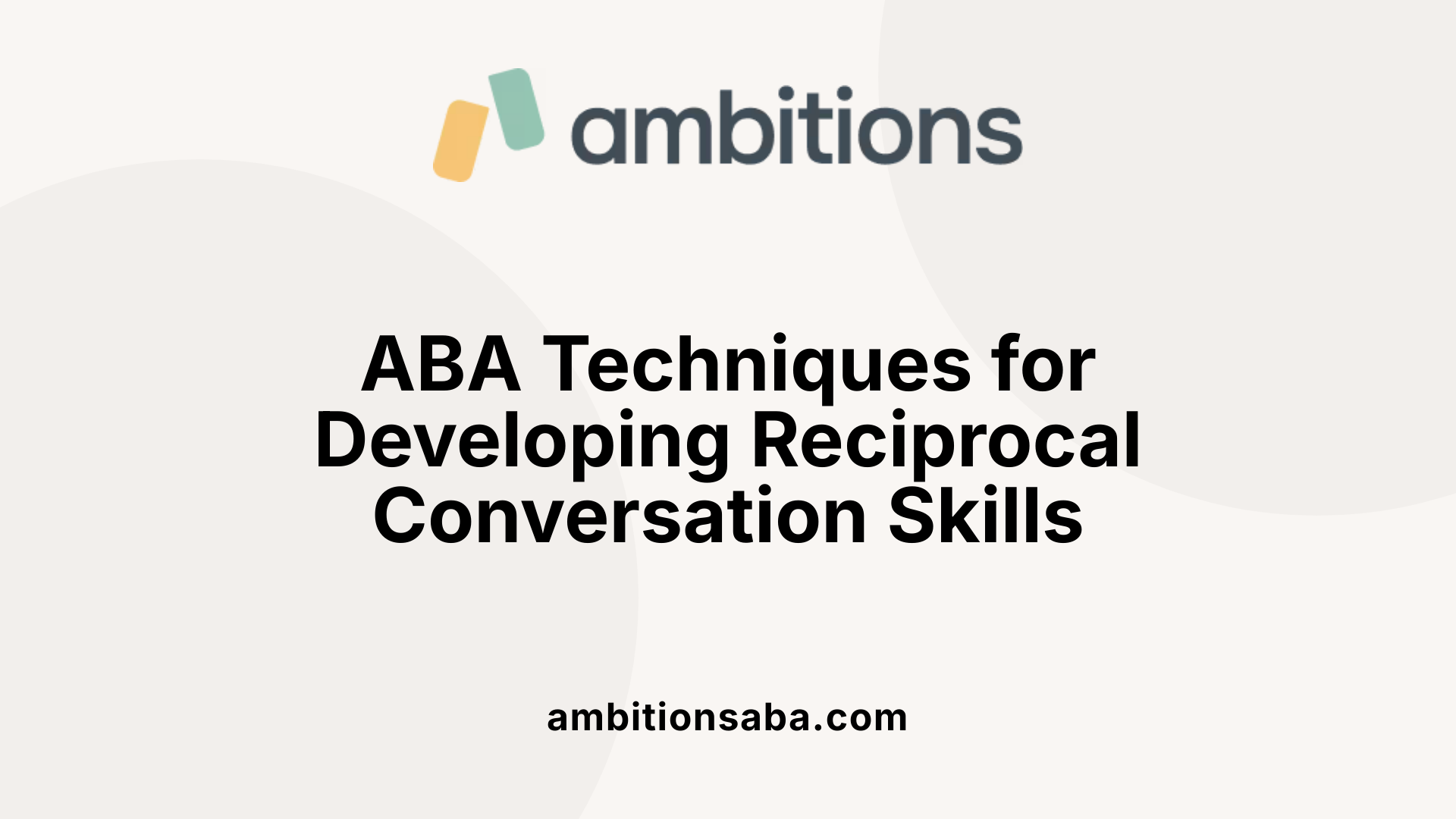
What techniques within ABA can help develop reciprocal conversation skills?
Applied Behavior Analysis (ABA) incorporates several effective techniques to teach and strengthen reciprocal conversation skills in children with autism. One primary approach involves prompting strategies, which can be verbal, visual, or physical. These prompts guide children to respond appropriately during social interactions. For example, a therapist might use visual cues like picture cards or gestures to indicate when it's their turn to speak or ask a question.
As children begin responding correctly, prompts are gradually faded. This process promotes independence in conversational exchanges, enabling children to initiate and respond without continuous assistance.
Reinforcement is crucial in ABA. Immediate positive feedback, such as praise, tokens, or access to preferred items, increases motivation and encourages children to practice reciprocal conversation behaviors. Reinforcing both initiating conversations and responding appropriately helps embed these skills into their social repertoire.
Structured teaching methods like Discrete Trial Training (DTT), Natural Environment Teaching (NET), and Pivotal Response Treatment (PRT) are tailored to teach conversational skills effectively. DTT involves breaking down complex skills into small, manageable steps and practicing them repeatedly. NET focuses on teaching in natural settings, making the learned behaviors more applicable to everyday situations. PRT emphasizes pivotal areas like motivation and responsivity, encouraging spontaneous and generalized social interactions.
Modeling and role-playing are additional strategies used within ABA to demonstrate proper conversational behaviors such as making comments, asking questions, and maintaining topic relevance. Using social stories and conversation topic cards helps children understand social cues and appropriate responses.
Furthermore, functional communication training (FCT) and visual aids—such as communication devices or picture exchange systems—enhance the child's ability to initiate conversations effectively. FCT teaches alternative ways of communicating needs and interests, which serve as a foundation for reciprocal exchanges.
Incorporating these ABA techniques helps children develop essential social skills like turn-taking, understanding non-verbal cues, and engaging in back-and-forth dialogue, which are fundamental to successful reciprocal conversations.
Activities and Resources for Promoting Conversational Reciprocity

What are effective activities and resources to teach conversational reciprocity?
Teaching conversational reciprocity to individuals with autism is supported through a variety of engaging and structured activities. Role-playing exercises are particularly effective; they allow individuals to practice real-life conversation scenarios in a safe and controlled environment. For example, children can practice taking turns in a mock restaurant or store setting, learning how to initiate and respond during social exchanges.
Social stories and conversation games also serve as valuable tools. Social stories use simple narratives to illustrate appropriate social behaviors, including asking questions, sharing comments, and reading social cues. Games like bingo or turn-taking activities promote interactive skills while keeping the learning process fun. These activities help individuals become comfortable with back-and-forth exchanges, learning to maintain the flow of conversation.
Visual supports are essential, especially for those who benefit from visual learning. Visual prompts, such as cue cards with questions or comment starters, can guide individuals on what to say next. Visual schedules provide a step-by-step sequence of conversation parts, helping learners understand and anticipate social interactions. Animated PowerPoint lessons or social scripts with pictures aid in illustrating conversational steps clearly.
Implementing real-life scenarios and modeling behaviors further enhances skill acquisition. For example, an instructor might demonstrate a game of catch, highlighting how to take turns and comment on each other's actions. This method shows the practical application of reciprocal interaction and helps learners imitate and generalize these skills.
Breaking down complex social behaviors into smaller, manageable steps is a common strategy. For instance, teaching eye contact, asking questions, and staying on topic separately before combining these skills into a complete conversation routine ensures understanding and boosts confidence.
Additional resources include downloadable worksheets with conversation starters, social narratives tailored to different age groups, and structured prompts that guide the learners through the interaction process. These materials support educators and therapists in systematically teaching reciprocity, ensuring that learning is consistent and progress is measurable.
By integrating these activities and resources into educational or therapy sessions, caregivers and professionals can create a comprehensive approach to developing conversational reciprocity in individuals with autism. These methods not only teach the technical skills of conversation but also promote social engagement and confidence, encouraging meaningful interactions in everyday life.
ABA Strategies for Teaching Reciprocal Questions, Social Interaction, and Turn-Taking
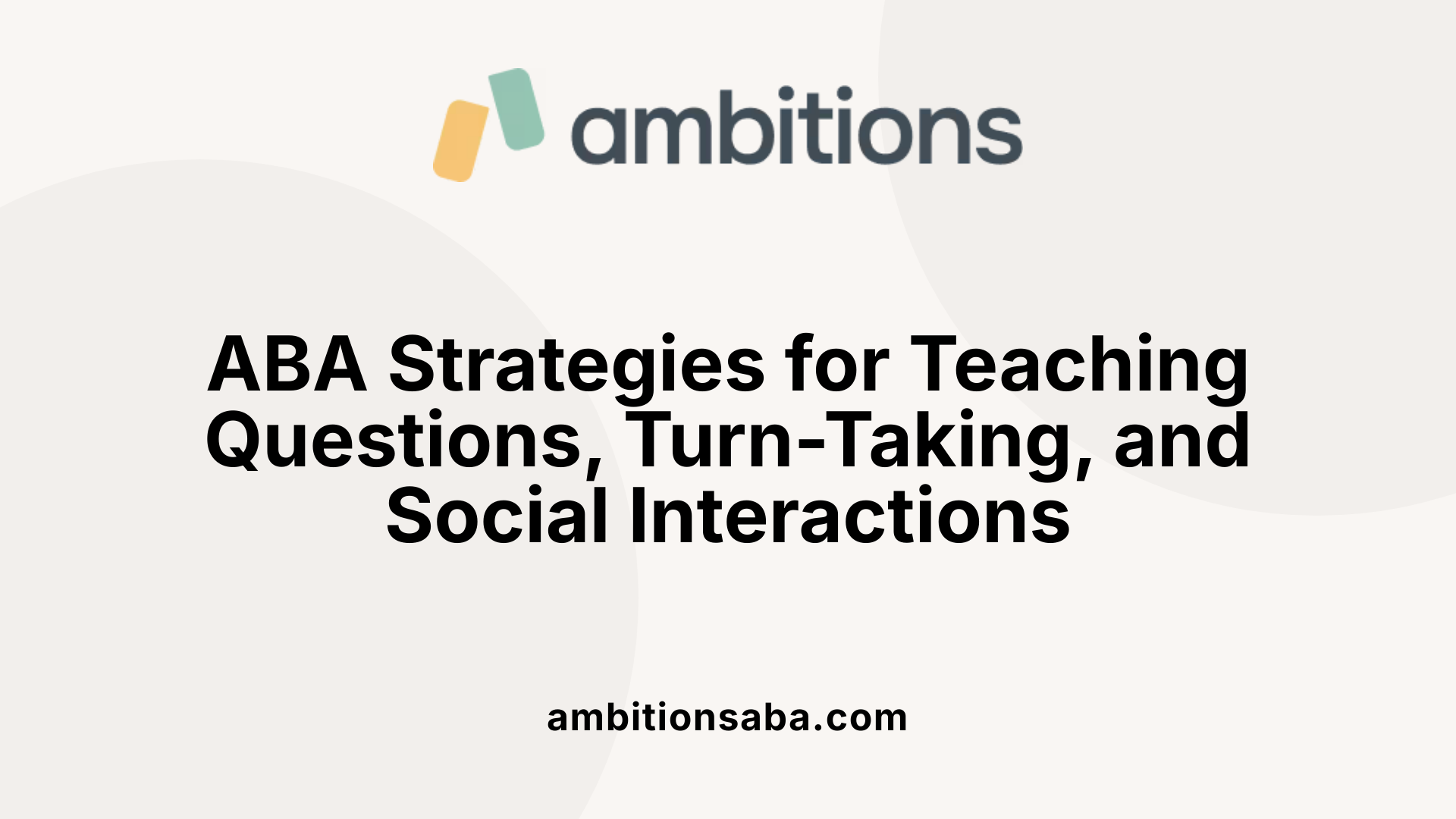
How can ABA techniques be applied to teach reciprocal questions, social interaction, and turn-taking?
Applied Behavior Analysis (ABA) offers effective methods for teaching children with autism the essentials of reciprocal social communication. One primary approach involves modeling and prompting within carefully structured activities. Therapists demonstrate appropriate behaviors such as asking questions, taking turns, and maintaining eye contact. These are then reinforced through positive feedback, helping children learn which behaviors are expected.
Role-playing exercises, social stories, and video modeling are also used to exemplify social interactions. These tools make abstract social concepts more concrete, allowing children to visualize and practice proper responses in a safe environment. For example, a social story might outline steps for initiating a conversation or sharing toys during play.
Reinforcement plays a pivotal role in encouraging progress. Praise, tokens, or preferred items are used to motivate children to engage in reciprocal conversations. Consistent reinforcement helps solidify these skills, making social exchanges more natural.
Incorporating turn-taking is vital in games, collaborative tasks, and pretend play. Activities like puzzles, board games, or role-playing scenarios teach children to wait their turn, share resources, and respond appropriately.
Building rapport and engagement are also crucial. This can be achieved through enjoyable activities tailored to each child's interests, such as interactive play or storytelling. These activities foster a positive learning environment and increase motivation.
The combination of modeling, prompting, reinforcement, and engaging activities within a supportive setting allows children to develop meaningful conversational and social skills. Tailoring interventions to individual needs ensures lasting improvements in reciprocal questions, social interactions, and turn-taking.
Strategies in Practice:
| Technique | Description | Example | Additional Details | |--------------------------------|--------------------------------------------------------------------|------------------------------------------------------------|--------------------------------------------| | Modeling and Prompting | Demonstrating desired behaviors and prompting correct responses. | Therapist models asking |
Research and Evidence-Based Practices Supporting Reciprocal Conversation in Autism
What are evidence-based practices for improving conversational reciprocity in autism using ABA?
Teaching reciprocal conversation skills to individuals with autism involves a variety of evidence-based practices rooted in Applied Behavior Analysis (ABA). These approaches focus on creating structured, engaging, and naturalistic learning environments to promote spontaneous social interactions.
One effective method is Pivotal Response Training (PRT), which emphasizes motivation, self-initiation, and shared responsibility during interactions. PRT encourages children to initiate conversations and respond appropriately, making social exchanges more meaningful and engaging.
Naturalistic Language Strategies involve embedding teaching into everyday activities, using modeling, prompting, and reinforcement during natural routines. Video modeling is another powerful tool, where individuals watch videos demonstrating appropriate conversational behaviors, reinforcing correct responses and social cues.
Discrete Trial Training (DTT) and Functional Communication Training (FCT) are structured techniques that break down specific conversational skills into manageable steps. DTT provides clear cues and reinforcement, while FCT focuses on teaching functional communication methods such as asking questions or requesting items.
The Picture Exchange Communication System (PECS) helps children with limited verbal skills develop functional communication by exchanging pictures or symbols to initiate conversations and express needs.
Visual supports like social stories and social narratives are also integral. These tools teach about social norms, turn-taking, and expectations in reciprocal conversations, thereby increasing understanding and participation.
Peer-mediated interventions involve training peers to model, prompt, and reinforce conversational behaviors. This strategy provides real-world practice and encourages authentic social interactions.
Role-playing activities simulate conversation scenarios, allowing children to practice social skills in a safe, controlled environment. Prompting, reinforcement (such as praise or preferred items), and structured social opportunities further enhance skill development.
Additionally, strategies that encourage generalization and maintenance include consistently practicing skills across different settings, partners, and contexts, using visual supports and reinforcement to solidify gains.
| Practice/Strategy | Description | Goal/Benefit |
|---|---|---|
| PRT | Motivationally based naturalistic teaching | Increase spontaneous initiation and responsiveness |
| Video Modeling | Watching and imitating social behaviors | Promote understanding and imitation |
| DTT | Structured skill teaching with cues | Teach specific conversational skills systematically |
| PECS | Picture-based communication system | Develop functional expressive skills |
| Social Stories | Visual narratives about social situations | Clarify social norms and expectations |
| Peer-mediated Activities | Training peers to facilitate interactions | Encouage real-world social practice |
| Role-play | Acting out social scenarios | Practice conversation skills safely |
Role of peer-mediated activities and social narratives
Peer-mediated activities involve training classmates or peers to serve as social models and facilitators. These peers can prompt appropriate conversational responses, reinforce social cues, and serve as natural interaction partners. Such activities help children generalize their skills to everyday environments and build genuine peer relationships.
Social narratives are personalized stories that describe social situations, expectations, and behaviors. They prepare children for upcoming social interactions, reduce anxiety, and clarify what is expected in reciprocal conversations.
Strategies to promote generalization and maintenance
To ensure that conversational skills are maintained and transferred across settings and partners, practitioners recommend consistent practice in various environments—home, school, and community.
Using visual supports, such as schedules and social stories, helps reinforce understanding regardless of context. Reinforcement should be varied and meaningful, encouraging ongoing motivation.
Structured opportunities like social skills groups and playdates offer repeated practice, while clinician or caregiver prompts provide support during initial efforts.
Data collection and progress monitoring help track generalization and identify areas needing further emphasis. Regular reinforcement and the use of natural reinforcement during unstructured play promote lasting skill retention.
| Aspect | Strategy | Purpose | Additional Notes |
|---|---|---|---|
| Generalization | Practice across different environments | Transfer skills to real-world settings | Include home, school, community |
| Maintenance | Continued reinforcement | Sustain learned behaviors | Use natural reinforcers, social praise |
| Monitoring | Regular data collection | Track progress and adjust | Use for ongoing planning |
This comprehensive array of ABA techniques, social interventions, and strategic practice fosters meaningful improvements in reciprocal conversation skills among individuals with autism, guiding them toward more engaging and effective social interactions.
Fostering Lasting Social Skills through ABA
Teaching conversational reciprocity is a vital component of social development for children with autism. ABA provides a comprehensive toolkit of strategies, from visual supports and role-playing to structured teaching and reinforcement, all aimed at promoting meaningful, spontaneous interactions. Consistent application of these evidence-based practices helps children build confidence, enhance communication, and form lasting social relationships. When combined with family involvement and real-world practice, ABA approaches support not only skill acquisition but also the generalization and maintenance of social skills across multiple environments, ultimately improving quality of life.
References
- The Basics of Teaching Reciprocal Conversation in Autism -
- Using Self-Management to Improve the Reciprocal Social ...
- What is Reciprocal Play in ABA All About
- Fostering Reciprocal Conversation in Autism Therapy
- Developing Conversation Skills in Childhood - Cadey
- Teaching Reciprocal Conversation for Autism - Beyond Care Therapy
- Harnessing ABA Therapy for Social Skills Development in Autism
- How ABA Therapy Helps Improve Social Skills in Children
- Using Self-Management to Improve the Reciprocal Social ...


